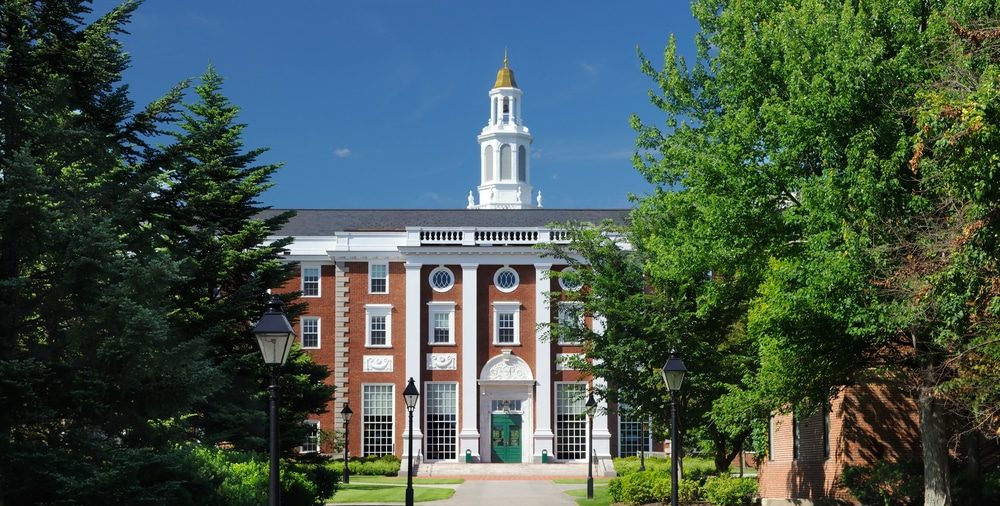Harvard Waitlist 2025
Applying to Harvard Waitlist 2025 is no easy task, and even the most qualified students may find themselves on the institution’s waitlist. In this article, we take a deep dive into understanding what the waitlist process entails, the statistics that underscore it, the demographics of the waitlisted students, the impact of COVID-19, and finally, tips to ensure a better chance of getting off this list.
Understanding Harvard’s Waitlist 2025 Process
Acceptance into Harvard is an incredibly competitive process, with yearly acceptance rates generally falling below 6%. However, a particular group of applicants neither receives outright acceptance nor rejection. This lot forms the waitlist. Herein, we delve into what the waitlist comprises and the factors affecting the selection process.
The Role of the Harvard Waitlist 2025
Harvard utilizes the waitlist to account for students who may not take up their original acceptance offer, hence allowing them to maintain their enrollment numbers. The waitlist plays the role of a buffer, smoothing the university’s admission process by providing a pool of equally qualified students who can be offered acceptance if spots become available.
Being on the waitlist does not necessarily dim your hopes of getting into this prestigious institution. Instead, viewing it from another perspective, it signifies that the admission committee recognizes your potential to flourish at Harvard.
When a student declines their acceptance offer, it creates an opening in the incoming class. The waitlist serves as a way for Harvard to fill these vacancies with students who have already been vetted and deemed qualified. This ensures that the university maintains its high standards and admits students who are a good fit for the institution.
Furthermore, the waitlist allows Harvard to create a diverse and well-rounded student body. By carefully selecting students from the waitlist, the university can ensure representation from different backgrounds, interests, and talents.
Factors Influencing the Harvard Waitlist 2025 Selection
The applicants selected to be on the waitlist are often students who demonstrate high academic ability, show passion in their extracurricular activities, and, importantly, are believed to fit the Harvard culture well. Factors such as grade point average (GPA), SAT/ACT scores, letters of recommendation, personal essays, and overall involvement outside of academia all contribute to whether an applicant may be placed on the waitlist.
Harvard takes a holistic approach to evaluating applications, considering not only academic achievements but also personal qualities, leadership potential, and unique experiences. The admissions committee looks for applicants who have made a positive impact in their communities, showing resilience in the face of challenges, and demonstrating a genuine passion for learning.
In addition to individual attributes, overall application trends and university needs can influence the waitlist selection process. This includes aspects like desire for certain majors, preference for geographic diversity, etc., which contribute significantly to the dynamics of the waitlist placement.
Harvard strives to create a diverse and inclusive community, and the waitlist provides an opportunity to achieve this goal. The university considers factors such as race, ethnicity, socioeconomic background, and first-generation status when making waitlist decisions. By doing so, Harvard ensures that its student body reflects the rich tapestry of society and promotes a vibrant and intellectually stimulating environment.
It’s important to note that being placed on the waitlist is not a reflection of an applicant’s inadequacy, but rather a testament to the highly competitive nature of the admissions process. Harvard receives an abundance of exceptional applications each year, and the waitlist serves as a way to carefully consider and evaluate these candidates.
While being on the waitlist can be challenging, it’s crucial for applicants to remain positive and continue pursuing their academic and extracurricular endeavors. Many students who have been admitted to Harvard in the past were initially waitlisted, and their perseverance and dedication ultimately paid off.
Overall, the waitlist process at Harvard is designed to ensure that the university admits the most qualified and diverse group of students. It serves as a mechanism to maintain enrollment numbers, fill vacancies, and create a vibrant community of scholars. While the waitlist can be uncertain and anxiety-inducing, it also presents an opportunity for applicants to showcase their determination and potential.
The Statistics Behind the Harvard Waitlist 2025
Working with figures helps to drive the narrative better and hence the focus now shifts to the numbers behind the famous Harvard waitlist.
Number of Students on the Harvard Waitlist 2025
The number of waitlisted students varies each year. However, generally, the university waitlists around 1,000 applicants annually. While the number seems high, it’s important to keep in mind that Harvard receives over 40,000 applications each year.
Harvard’s waitlist is a highly competitive pool, with thousands of qualified applicants vying for a limited number of spots. The admissions committee carefully reviews each application to determine which students will be placed on the waitlist. Factors such as academic achievements, extracurricular involvement, and personal qualities are taken into consideration.
Being placed on the waitlist can be both exciting and nerve-wracking for applicants. It offers a glimmer of hope that they may still have a chance of being admitted to one of the most prestigious universities in the world. However, the waitlist also brings uncertainty, as students must wait for a final decision while others receive their acceptance or rejection letters.
Harvard’s waitlist is not a static list. As students decline their offers of admission, spots open up on the waitlist. The admissions committee then reevaluates the remaining applicants and extends offers to those who they believe would be a good fit for the university.
Harvard Waitlist 2025 Acceptance Rates
The number of students accepted off the Harvard waitlist also fluctuates year to year. For instance, in 2020, the university accepted a record 196 students from the waitlist. However, this number can drop significantly in other years, based on the number of students who accept their initial admission offer.
Being accepted off the waitlist is an incredible achievement. It means that the admissions committee has recognized the applicant’s potential and believes they would contribute positively to the Harvard community. Accepted students often feel a mix of joy, relief, and gratitude when they receive the news.
However, the waitlist acceptance process can be challenging. Students who are accepted off the waitlist often have a limited amount of time to make their decision. They must weigh the pros and cons of attending Harvard against any other offers they may have received from other universities. This decision can be difficult, as it involves considering factors such as academic programs, financial aid packages, and personal preferences.
It’s important to note that being on the waitlist does not guarantee acceptance. Harvard carefully manages its waitlist to ensure that it can accommodate the right number of students to maintain a diverse and vibrant student body. The admissions committee considers various factors when making their final decisions, including the number of students who have already accepted their offers of admission and the university’s enrollment goals.
Overall, the statistics behind the Harvard waitlist reveal the competitive nature of the admissions process and the careful considerations made by the admissions committee. While the number of students on the waitlist and the acceptance rates may vary from year to year, one thing remains constant: the hope and anticipation felt by those who find themselves on this prestigious list.
Demographics of the Waitlisted Students
A deeper delve into the statistics uncovers more about the demographics of the waitlisted students. Let’s dissect this further.
Geographic Distribution
Harvard values geographic diversity in its student body, considering applicants from all 50 U.S. states and many countries worldwide. This commitment to global representation extends to the waitlist as well. The waitlisted students come from a wide range of locations, spanning continents and crossing borders. From bustling cities to remote rural areas, the waitlist reflects the rich tapestry of the world.
Factors such as admission trends, international relations, and cultural exchange programs play a significant role in shaping the geographic distribution of the waitlist. The ebb and flow of applications from different regions, the university’s efforts to build relationships with institutions abroad, and the desire to foster a global community all contribute to the diverse representation on the waitlist.
Diversity on the Harvard Waitlist 2025
Along with geographic diversity, Harvard also strives for robust racial, cultural, and socioeconomic diversity. The composition of the waitlist reflects this commitment, as the university seeks to create an inclusive environment where students from all backgrounds can thrive.
The waitlist is a microcosm of the broader applicant pool, encompassing individuals from various racial and ethnic backgrounds, cultures, and socioeconomic statuses. The university recognizes the value of different perspectives and experiences, understanding that a diverse student body enriches the educational experience for all.
Factors such as application volume and strength from different segments of society contribute to the diversity on the waitlist. Harvard carefully considers the unique qualities and achievements of each applicant, recognizing the potential they bring to the university community.
The Impact of COVID-19 on the Harvard Waitlist 2025
The global pandemic disrupted everything, and the Harvard waitlist wasn’t spared either. How exactly did it change things?
The COVID-19 pandemic had a profound impact on the waitlist at Harvard University. As the world grappled with the uncertainties brought by the virus, the landscape of college admissions underwent significant transformations. The once predictable and well-established process was suddenly thrown into disarray, forcing institutions like Harvard to adapt to the new normal.
Changes in Application and Acceptance Trends
One of the most noticeable changes in the wake of the pandemic was the shift in application trends. With the traditional educational system disrupted and students seeking stability in uncertain times, there was a major surge in higher education applications. As a result, Harvard University experienced a record-high number of applications in 2020, causing the waitlist to balloon to unprecedented levels.
Students who had previously viewed the waitlist as a long shot suddenly found themselves with a glimmer of hope. The increased competition and the desire for a prestigious education pushed more students to accept a place on the waitlist, hoping for a chance to be admitted.
Harvard, like many other universities, faced a difficult decision in managing the waitlist. The admissions committee had to carefully consider the balance between accepting students from the waitlist and maintaining the integrity of the incoming class. Ultimately, the university made the unprecedented move of accepting an unusually high number of students off the waitlist, providing an opportunity for those who had been patiently waiting.
The Future of the Waitlist Post-Pandemic
As the world continues to navigate the challenges posed by the pandemic, the future of the waitlist remains uncertain. The coming years could witness the reversal of the trend seen during the pandemic, as the global situation stabilizes and students regain confidence in their college choices. Alternatively, the pandemic may have forever changed the dynamics of college admissions, solidifying the waitlist as a crucial component of the process.
Only time will tell if the surge in applications and the subsequent increase in waitlist acceptances were temporary phenomena or if they mark a permanent shift in the college admission landscape. The return to normalcy will provide valuable insights into the long-term effects of the pandemic on the waitlist and the overall college admissions process.
Regardless of what the future holds, one thing is certain: the COVID-19 pandemic has left an indelible mark on the waitlist at Harvard University. It has forced institutions to reevaluate their strategies, adapt to changing circumstances, and provide opportunities for students who may have otherwise been overlooked.
As the world gradually recovers from the pandemic, universities like Harvard will continue to monitor the situation closely, ensuring that the waitlist remains a fair and equitable process for all applicants. The lessons learned from this unprecedented time will shape the future of college admissions, ensuring that the pursuit of education remains resilient in the face of adversity.
How to Improve Your Chances of Getting Off the Waitlist
Finally, everyone’s waitlist million-dollar question: How can one increase their opportunities of being accepted off it?
Effective Communication with the Admissions Office
Staying in touch with Harvard’s admissions office, updating them about any noteworthy accomplishments or changes in your application, and reasserting your interest in the university could improve your chances of getting off the waitlist.
Demonstrating Continued Interest
Demonstrating continued enthusiasm for Harvard University even while on the waitlist could influence your admission. This could involve sending a letter of continued interest (LOCI), highlighting why Harvard is your top choice and the value you intend to add to the school.
In conclusion, while being placed on the Harvard waitlist may seem discouraging, understanding the structure, statistics, and dynamics of the waitlist can offer hope. With persistence and strategy, your Harvard dream is still within reach.








































